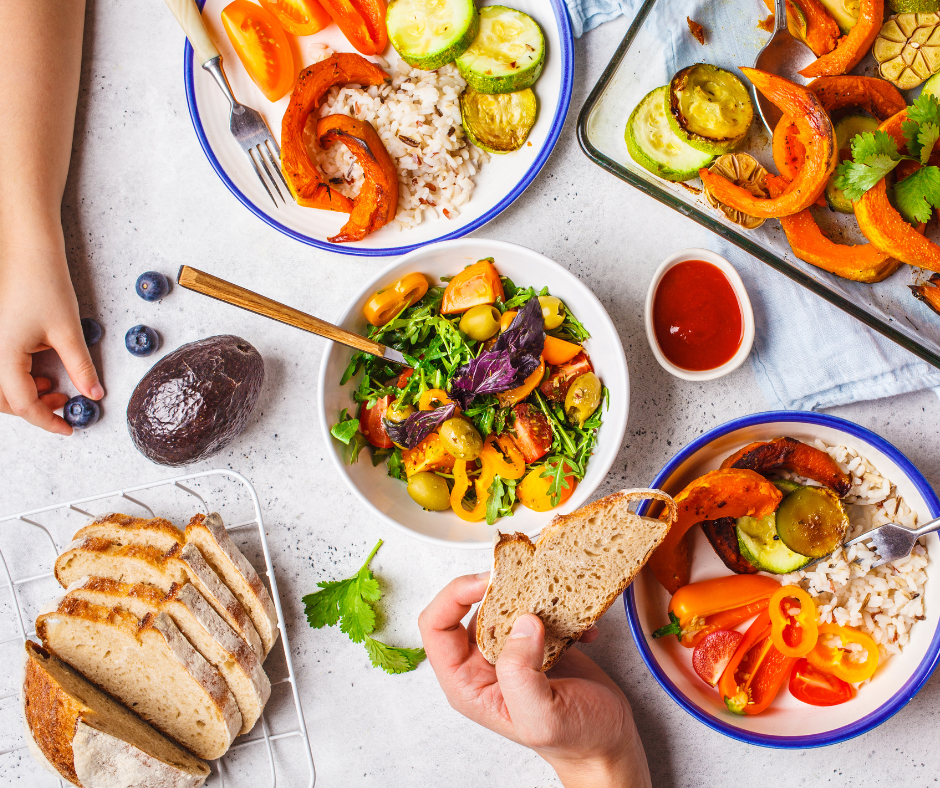With the cost of living increasing by the day, most of us have had to look at our spending habits. How can we still plan to eat healthily when fruit and vegetables have had one of the highest increases in cost over the past year?
Well, with a little planning, it can be done. Follow our top five tips for eating healthier on a budget:
1. Plan ahead
- Use a list or shop online so you’re in control of your purchases. Write your list with your meal plan in mind, that way you’ll avoid buying costly ingredients on impulse.
- Don’t shop on an empty stomach as that’s when you’re most likely to buy those little indulgent extras that you don’t really need.
- Plan weekly meals around what’s on special. Check supermarket catalogues or use apps such as SmartCart, WiseList SmartCart or Frugl, which compare supermarket prices.
- Prepping meals ahead of time is essential. Set aside some time each week, say on a Sunday afternoon, to plan for the week. Many meals or ingredients can be prepped ahead of time or frozen to use later in the week.
2. Reduce food waste
Australia creates more than 7.6 million tonnes of food waste a year – enough to fill the MCG nine times! Here are some ways you can reduce your own food waste:
- Check what’s in your pantry before you shop so you’re not doubling up on things you already have at home.
- Keep a freezer inventory to keep track of what’s in there and how long it’s been there.
- Reinvent leftovers – today’s roast chicken can be tomorrow’s wholesome chicken and veg soup.
3. Location, location, location!
- The outer aisles of the supermarket are where you’ll find the freshest foods, as well as frozen items which can be great alternatives. Shopping only from the outer aisles will help you avoid expensive, processed foods in the centre aisles.
- If shopping for essential packaged groceries or ingredients, be wary of product placement. The most nutritious bang for your buck is not always at eye level or the first one that comes to hand. Often there are good alternative brands located on the top or bottom shelves. Compare prices using shelf unit price per 100g to ascertain the best buy. If you can, take the time to read nutritional labels to compare brands and choose the most affordable as well as the most nutritious option for you and your family.
4. Assess your top spends
- Check your supermarket receipt to see where you are spending the most. Consider ways to reduce these costs by buying in bulk or swapping out expensive items, e.g. replacing meat with meat alternatives or pulses, having “meat free Mondays”.
- Spending too much on take-away food or home delivery? Plan for these within your budget and avoid impulse takeaway orders. Recreate takeaway meals at home with homemade burgers and salad or a family favourite stir fry. That way you keep in control of the nutrition as well as the cost.
- Get in the habit of routinely preparing and packing lunches each day so you’re not tempted to duck out for cafe or takeaway food. With a shop bought chicken and avo sandwich compared to a homemade one, neither the nutritional profile nor the cost are in your favour.
- Buy one or two takeaway coffees everyday? Try and reduce reliance on store bought coffees. Cutting out one bought coffee a day can add up to more than $2000 saved over a year. Think about that the next time you order your afternoon coffee!
5. Embrace the season
- Eat seasonally and shop at markets and local farmer’s markets. Seasonal produce is usually cheaper, fresher and tastes better.
- Consider canned or frozen alternatives, especially for more expensive fresh foods such as berries or peas. Avoid brands with added sugars and salt in canned foods.
- Better still, grow your own veggies and swap with neighbours and friends.
Changing habits can take time. But even the smallest changes can make all the difference to your health as well as your bank balance.

